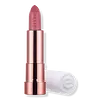What's inside
What's inside
 Key Ingredients
Key Ingredients

 Benefits
Benefits

 Concerns
Concerns

 Ingredients Side-by-side
Ingredients Side-by-side

Lanolin Oil
EmollientOleyl Erucate
EmollientSesamum Indicum Seed Oil
EmollientMicrocrystalline Wax
Emulsion StabilisingPPG-5 Lanolin Wax
EmollientAcetylated Lanolin
EmollientBeeswax
Emulsion StabilisingDisteardimonium Hectorite
StabilisingParfum
MaskingTocopheryl Acetate
AntioxidantRosa Canina Fruit Oil
EmollientPentaerythrityl Tetra-Di-T-Butyl Hydroxyhydrocinnamate
AntioxidantSynthetic Fluorphlogopite
Argania Spinosa Kernel Oil
EmollientCalcium Aluminum Borosilicate
Geraniol
PerfumingBenzyl Alcohol
PerfumingSilica
AbrasiveHexyl Cinnamal
PerfumingHydroxycitronellal
PerfumingCalcium Sodium Borosilicate
Methyl 2-Octynoate
PerfumingTin Oxide
AbrasivePolyethylene Terephthalate
Acrylates Copolymer
Mica
Cosmetic ColorantCI 77891
Cosmetic ColorantCI 77499
Cosmetic ColorantCI 77492
Cosmetic ColorantCI 77491
Cosmetic ColorantCI 15850
Cosmetic ColorantCI 45410
Cosmetic ColorantCI 15985
Cosmetic ColorantCI 77163
Cosmetic ColorantCI 19140
Cosmetic ColorantCI 45380
Cosmetic ColorantCI 75470
Cosmetic ColorantCI 42090
Cosmetic ColorantLanolin Oil, Oleyl Erucate, Sesamum Indicum Seed Oil, Microcrystalline Wax, PPG-5 Lanolin Wax, Acetylated Lanolin, Beeswax, Disteardimonium Hectorite, Parfum, Tocopheryl Acetate, Rosa Canina Fruit Oil, Pentaerythrityl Tetra-Di-T-Butyl Hydroxyhydrocinnamate, Synthetic Fluorphlogopite, Argania Spinosa Kernel Oil, Calcium Aluminum Borosilicate, Geraniol, Benzyl Alcohol, Silica, Hexyl Cinnamal, Hydroxycitronellal, Calcium Sodium Borosilicate, Methyl 2-Octynoate, Tin Oxide, Polyethylene Terephthalate, Acrylates Copolymer, Mica, CI 77891, CI 77499, CI 77492, CI 77491, CI 15850, CI 45410, CI 15985, CI 77163, CI 19140, CI 45380, CI 75470, CI 42090
Ethylhexyl Palmitate
EmollientCI 77220
Cosmetic ColorantKaolin
AbrasiveCera Microcristallina
Emulsion StabilisingEuphorbia Cerifera Wax
Synthetic Wax
AbrasiveDisteardimonium Hectorite
StabilisingPetrolatum
EmollientSilica Dimethyl Silylate
EmollientTocopherol
AntioxidantGlyceryl Caprylate
EmollientVp/Hexadecene Copolymer
BHT
AntioxidantOctyldodecanol
EmollientAluminum Hydroxide
EmollientParfum
MaskingHexyl Cinnamal
PerfumingLinalool
PerfumingCI 15850
Cosmetic ColorantCI 77491
Cosmetic ColorantCI 77499
Cosmetic ColorantCI 77891
Cosmetic ColorantEthylhexyl Palmitate, CI 77220, Kaolin, Cera Microcristallina, Euphorbia Cerifera Wax, Synthetic Wax, Disteardimonium Hectorite, Petrolatum, Silica Dimethyl Silylate, Tocopherol, Glyceryl Caprylate, Vp/Hexadecene Copolymer, BHT, Octyldodecanol, Aluminum Hydroxide, Parfum, Hexyl Cinnamal, Linalool, CI 15850, CI 77491, CI 77499, CI 77891
Ingredients Explained
These ingredients are found in both products.
Ingredients higher up in an ingredient list are typically present in a larger amount.
Ci 15850 is the pigment color red. It is an azo dye and created synthetically.
Azo dyes need to be thoroughly purified before use. This allows them to be more stable and longer-lasting.
This ingredient is common in foundations, lipsticks, and blushes. This color is described as brown/orangey red.
It has many secondary names such as Red 6 and Red 7. According to a manufacturer, Red 6 usually contains aluminum.
Learn more about CI 15850Ci 77491 is also hydrated iron III oxide. It's sole purpose is to give a red/pink hue to products.
Iron III oxides are classified as inorganic chemicals for coloring.
Synthetically created Ci 77491 is considered safer than those naturally found. This is because the synthetically created version may contain less impurities. Iron oxides are generally non-toxic and non-allergenic.
Learn more about CI 77491Ci 77499 is also hydrated iron III oxide. It is created from mixing red and black iron oxides. This helps give shades of darkness to a product.
Iron III oxides are classified as inorganic chemicals for coloring.
Ci 77891 is a white pigment from Titanium dioxide. It is naturally found in minerals such as rutile and ilmenite.
It's main function is to add a white color to cosmetics. It can also be mixed with other colors to create different shades.
Ci 77891 is commonly found in sunscreens due to its ability to block UV rays.
Learn more about CI 77891Disteardimonium Hectorite comes from the clay mineral named hectorite. It is used to add thickness to a product.
It can also help stabilize a product by helping to disperse other ingredients.
Hectorite is a rare, white clay mineral.
Learn more about Disteardimonium HectoriteHexyl Cinnamal is a fragrance ingredient with a similar scent to jasmine. It can be naturally found in chamomile essential oil.
This ingredient is a known EU allergen and may sensitize the skin. The EU requires this ingredient to be listed separately on an ingredients list.
Hexyl Cinnamal is not water soluble but is soluble in oils.
Learn more about Hexyl CinnamalParfum is a catch-all term for an ingredient or more that is used to give a scent to products.
Also called "fragrance", this ingredient can be a blend of hundreds of chemicals or plant oils. This means every product with "fragrance" or "parfum" in the ingredients list is a different mixture.
For instance, Habanolide is a proprietary trade name for a specific aroma chemical. When used as a fragrance ingredient in cosmetics, most aroma chemicals fall under the broad labeling category of “FRAGRANCE” or “PARFUM” according to EU and US regulations.
The term 'parfum' or 'fragrance' is not regulated in many countries. In many cases, it is up to the brand to define this term.
For instance, many brands choose to label themselves as "fragrance-free" because they are not using synthetic fragrances. However, their products may still contain ingredients such as essential oils that are considered a fragrance by INCI standards.
One example is Calendula flower extract. Calendula is an essential oil that still imparts a scent or 'fragrance'.
Depending on the blend, the ingredients in the mixture can cause allergies and sensitivities on the skin. Some ingredients that are known EU allergens include linalool and citronellol.
Parfum can also be used to mask or cover an unpleasant scent.
The bottom line is: not all fragrances/parfum/ingredients are created equally. If you are worried about fragrances, we recommend taking a closer look at an ingredient. And of course, we always recommend speaking with a professional.
Learn more about Parfum